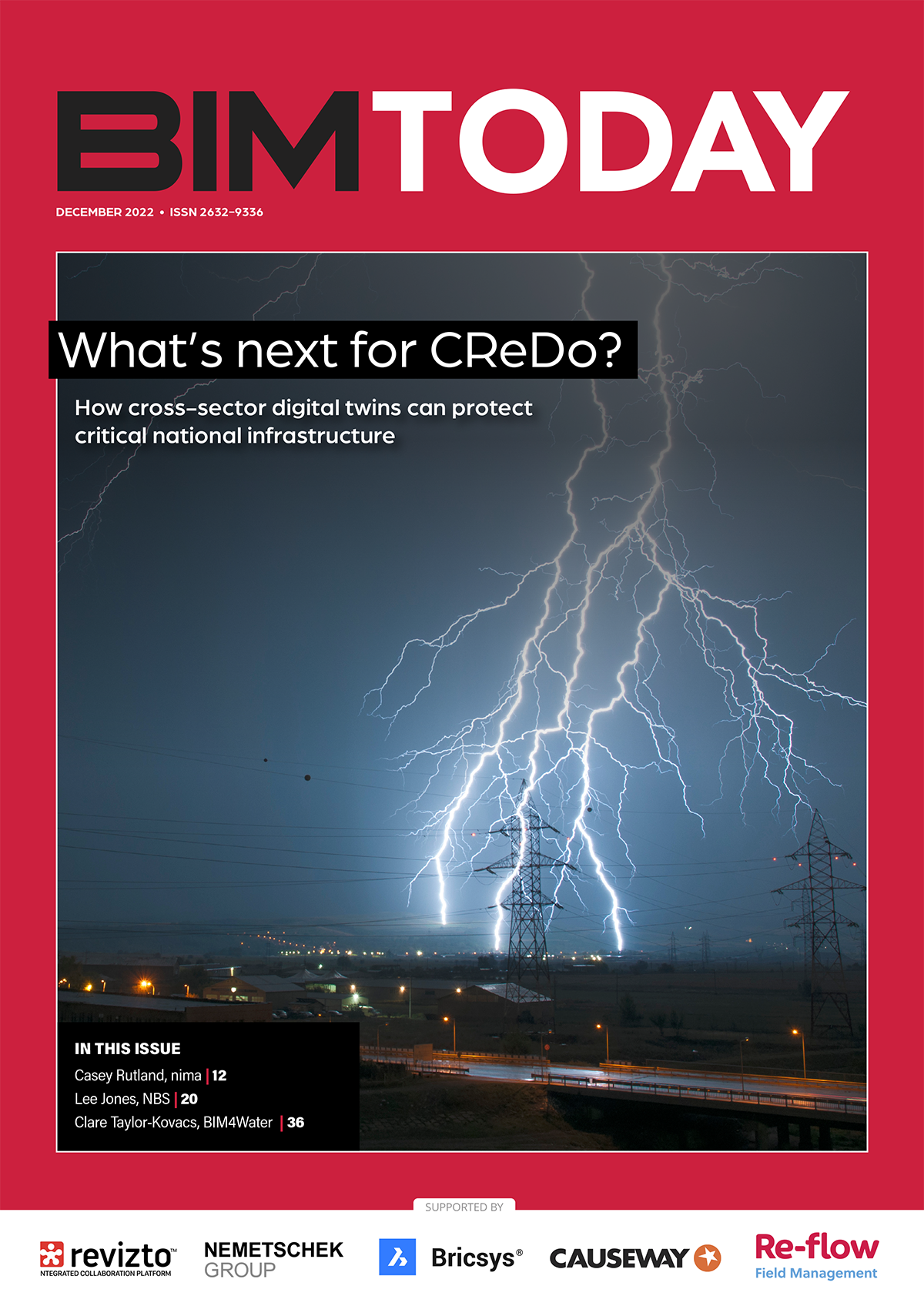Welcome to the December edition of BIM Today. With winter closing in, our cover story looks at the next phase of the Climate Resilience Demonstrator (CReDo) project and the use of digital twins in protecting critical national infrastructure from extreme weather
Casey Rutland discusses nima, the new identity of the UK BIM Alliance, and the shifting focus of digital transformation, while the Geospatial Commission outlines its call for evidence from the industry to help shape the government’s strategy for the use of location data.
There’s a look at construction data’s role in building cleaner, greener buildings, the Apollo Protocol’s first events showcasing the benefits of cross-sector digital twins and why better understanding building usage is a key enabler to delivering a net zero built environment.
Rebecca De Cicco charts the past, present and future of Women in BIM, there’s a look at the partnership between BIM4Water and the Made Smarter Innovation: Centre for People-Led Digitalisation and Brian Hills of The Data Lab explains how data-led solutions can help tackle the energy crisis.
There’s much more besides, from the global state of preconstruction and using BIM to renovate historic buildings to case studies showcasing the application of digital technology on real world projects.
Here’s a selection on what’s in store:
Why systems thinking and a Climate Resilience Demonstrator (CReDo) matters for Critical National Infrastructure.
Casey Rutland, vice-chair of nima, explains the change of identity and a shift in the focus of digital transformation in the built environment.
Last month, the Geospatial Commission launched a Call for Evidence that encourages all stakeholders to contribute to the government’s evolving strategy to accelerate the UK’s use of location data.
Construction data is key to achieving a greener, cleaner built environment, says Lee Jones, acting head of sustainability at Byggfakta Group and head of manufacturing solutions at NBS.
Understanding our building usage is a key enabler to deliver an inclusive net zero built environment, says Paul Dodd, head of infrastructure technology at the Scottish Futures Trust.
Rebecca De Cicco, global chair and founder of Women in BIM, discusses the group’s evolution over the past decade – and what lies ahead as it supports women across the globe to become part of a digital-first industry.
Data-led solutions should be seen as a vital asset in the battle against rising living costs and the energy crisis, says Brian Hills, CEO of The Data Lab.
When we consider building safety and the Golden Thread, we asked BIM Academy’s managing director Dr Graham Kelly and Ryder Architecture’s safety director Allan Binns how we turn the ambitious requirements of the revised Building Safety Act into a reality for the built environment by October 2023?
Anand Mecheri, CEO of Invicara, aims to alleviate the confusion around the concept of digital twins and highlight the importance of good data in construction.
The Innovate UK-funded REWIRE project has created a virtual digital twin of Warrington in north-west England to help identify where carbon and efficiency savings can be made across the town’s buildings and energy systems.


